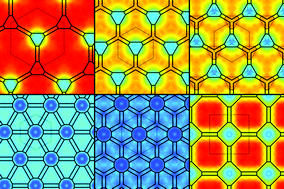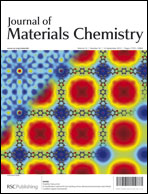The interlayer stacking of thirty-three two-dimensional covalent organic frameworks (2D COFs) that derive from five boron-containing, “connectors” and seven hydrocarbon “linkers” was evaluated with a Molecular Mechanics (MM) approach, employing the MM3 potential of Allinger et al. Several of these COFs have been synthesized previously, whereas others are proposed structures. This comprehensive study allowed us to classify the nature of COF stacking in terms of potential energy surfaces (PES) and, further, to determine the origin of these surfaces in terms of combinations of repulsive electrostatic and attractive dispersion forces. None of these 2D COFs stack in the exact eclipsed configuration traditionally assigned to these materials; instead, adjacent layers adopt surprisingly similar small offsets (1.5–2.8 Å). For verification, PES of selected, important interlayer offsets were obtained using more accurate Density Functional Theory (DFT) calculations and shown to produce similar offsets to those derived from MM. The symmetry of the 2D COF networks allows the offsets to be accommodated in several degenerate directions, precluding the formation of interlayer stacking patterns with pervasive long-range order, such as staircase, helical, or zigzag arrangements. Although these offsets are often small relative to the size of the COF unit cell, they are sufficient to impede the filling of COF pores with large “guests”, such as fullerenes. Finally, we use a combination of topological, compositional, and interaction parameters to provide a simple correlation that allows researchers to predict inter-layer offsets and interaction energies without performing any molecular simulations. Uncovering such design principles should pave the way to target the creation of COFs with prescribed structures and charge transport properties.


 Please wait while we load your content...
Please wait while we load your content...